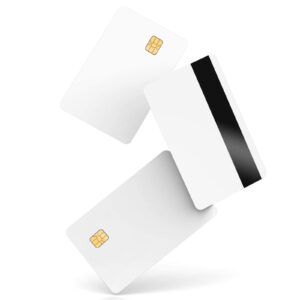In the digital age, card cloning has emerged as a significant concern. It’s a form of fraud that can have far-reaching implications.
But what exactly is a clone card?
Simply put, it’s a copy of a genuine card. The data from the original card is copied onto a blank card. This cloned card can then be used just like the original.
The technology behind this process is complex. It involves devices like skimmers and RFID readers. Even low-frequency cards can be cloned using tools like Proxmark3.
This article will delve into the world of clone card technology. We’ll explore how it’s changing the landscape of fraud prevention.
Stay tuned to learn more about this intriguing, yet concerning, aspect of our digital lives.
Introduction
Overview of Clone Card Technology
Clone card technology refers to the process of duplicating the information stored on an original card. This technology allows fraudsters to create exact replicas of legitimate cards, such as credit, debit, or access cards. It exploits vulnerabilities within the card’s security systems, allowing unauthorized access to financial or secure entry points.
Several tools and techniques are used in the cloning process. Skimmers can capture and store card information during a transaction. More advanced tools, like RFID readers, can scan and clone cards from a distance. The Proxmark3 is a versatile tool, often used for cloning low-frequency cards, demonstrating the sophistication of modern cloning methods.
With the advent of chip-enabled cards, one might assume cloning is now obsolete. However, fraudsters continuously evolve their techniques to bypass new security measures. Clone card technology remains a threat, as criminals find innovative ways to extract and replicate card data, posing ongoing challenges for cardholders and businesses alike.
Importance in Fraud Prevention
Fraud prevention has become a critical aspect of financial security. Understanding clone card technology helps in devising strategies to counteract it. As criminals adapt, so must our security systems and preventive measures. Awareness of how clone card technology operates allows for better defense mechanisms to be established.
Detecting cloned cards is essential in preventing identity theft and financial losses. It is vital for businesses, especially in the retail and banking sectors, to implement robust security measures. Employing advanced encryption and regular monitoring can help mitigate risks. Consumer education also plays a key role in fraud prevention. Customers who know the warning signs are less likely to fall victim to card cloning. This proactive approach in fraud prevention not only protects individuals but also enhances trust in financial systems.
Understanding Clone Cards
-
Original price was: £4,000.00.£3,999.00Current price is: £3,999.00. Select options This product has multiple variants. The options may be chosen on the product page
-
Original price was: £3,000.00.£2,999.00Current price is: £2,999.00. Select options This product has multiple variants. The options may be chosen on the product page
-
Original price was: £600.00.£599.00Current price is: £599.00. Select options This product has multiple variants. The options may be chosen on the product page
-
£700.00 – £5,000.00 Select options This product has multiple variants. The options may be chosen on the product page
-
£700.00 – £5,000.00 Select options This product has multiple variants. The options may be chosen on the product page
-
£700.00 – £5,000.00 Select options This product has multiple variants. The options may be chosen on the product page
-
£700.00 – £5,000.00 Select options This product has multiple variants. The options may be chosen on the product page
-
£700.00 – £5,000.00 Select options This product has multiple variants. The options may be chosen on the product page
What are Clone Cards?
Clone cards are illicit copies of legitimate credit, debit, or access cards. These cards replicate the original’s magnetic stripe or chip data, allowing unauthorized transactions or access. Criminals use various methods to gather card information and recreate physical copies.
Cloned cards are often manufactured using data stolen via skimmers, malware, or other means. Once replicated, these cloned cards can conduct transactions or access restricted areas. This makes them attractive tools for identity thieves and fraudsters.
Card cloning does not only stop at physical cards. Digital cards, such as those used in mobile wallets, can also be duplicated. This expands the threat to digital transaction platforms.
Here are some common forms of card cloning:
- Credit and Debit Card Cloning: Creating copies of financial cards for fraudulent transactions.
- SD Card Cloning: Copying data for duplication or transfer.
- SIM Card Cloning: Duplicating SIM information to intercept calls or messages.
- Access Card Cloning: Replicating entry cards to bypass security systems.
Understanding these types helps in identifying potential risks and safeguarding against them.
Evolution and History of Card Cloning
Card cloning has a long history, evolving with payment technology and security measures. In the early days, magnetic stripe cards were the primary targets. These cards stored data in a readable format, making them vulnerable to cloning via skimming devices.
As security measures advanced, chip-enabled cards emerged, enhancing protection against unauthorized replication. However, card fraudsters adapted, developing methods to bypass chip security, including the use of sophisticated RFID readers.
Over time, the widespread adoption of mobile and digital payment systems introduced new vulnerabilities. The cloning of SIM cards and NFC-enabled cards emerged as significant threats, reflecting the shift in fraud tactics.
Today’s card cloning tactics are more advanced, leveraging technology like the Proxmark3 for accessing low-frequency cards. Despite enhancements in security, fraudsters continually adapt their techniques. This ongoing evolution highlights the importance of staying vigilant against emerging cloning methods. Understanding the trajectory of card cloning is crucial in formulating effective prevention strategies.
How Clone Card Technology Works
The Role of Proxmark3 in Cloning Low Frequency Cards
Proxmark3 is a powerful tool frequently used in the cloning of low-frequency cards. This device is popular among security researchers and, unfortunately, cybercriminals. It allows users to read, write, and analyze RFID data from a variety of cards.
Low-frequency cards, such as hotel keys or building access badges, can be vulnerable to cloning. Proxmark3 can capture the data these cards emit. Once captured, the data can be copied to a blank card, creating a perfect duplicate.
The process involves a few key steps:
- Reading: The Proxmark3 reads the RFID signal from the target card.
- Analyzing: The captured data is examined to ensure accuracy.
- Writing: Finally, the data is written to a new blank card.
The simplicity and availability of the Proxmark3 make it a significant concern in security. Its capabilities highlight the risks posed by inadequate protection in low-frequency cards.
Cloning Chip in Access Cards
Access card cloning involves creating a duplicate card that provides the same entry permissions as the original. Modern access cards often use chip technology for secure data storage. However, these chips can still be compromised if not adequately protected.
Chip-based access cards utilize encryption to secure data, but vulnerabilities exist. Cloners exploit weak encryption or outdated security systems to retrieve card information. Once captured, this data can be transferred to a new card, granting unauthorized access.
The cloning process requires specific equipment like card readers and writers. These tools can capture the data signals emitted by legitimate cards. By bypassing the encryption, cloners can copy this data onto a new card.
Preventative measures, such as stronger encryption and frequent updates, are essential in thwarting these attempts. Organizations must stay ahead of such threats to protect their secure areas from unauthorized access.
Techniques for Cloning Credit Card Chips
Credit card chips offer enhanced security compared to traditional magnetic stripes, yet they are not immune to cloning. Attackers employ sophisticated methods to replicate chip data. These methods often begin with retrieving data during a legitimate transaction.
One common technique is the use of malware in point-of-sale systems. This malware captures card data during the transaction, which can then be used to create a clone. Another method involves using shimmers, which are thin devices inserted into card readers to intercept chip data.
The challenge lies in the implementation of advanced encryption by credit card issuers. However, if the encryption has flaws, cloners can exploit these vulnerabilities. Once obtained, the captured data is written to a blank chip to duplicate the original card.
Efforts such as chip-and-PIN systems help mitigate these risks. Constant advancements in security technology are crucial in curbing the cloning of credit card chips effectively. Users need to be aware of these risks and follow security advice diligently.
Applications and Implications
Clone Cards in E-commerce and Retail
Clone cards pose a significant threat to e-commerce and retail sectors. These duplicated cards can be used to make unauthorized purchases, costing businesses and customers substantial losses. Retailers face difficulties in identifying fraudulent transactions before financial damage occurs.
E-commerce is particularly vulnerable, as transactions lack a physical card presence. Fraudsters use cloned cards to exploit online shopping platforms, making it challenging to verify legitimate cardholder identity. This increases the risk of chargebacks, leading to financial and reputational harm for merchants.
The widespread use of clone cards also affects consumer trust. Shoppers may become hesitant to engage in online transactions due to security concerns. Retailers must implement strong fraud detection systems, like multi-factor authentication and real-time monitoring, to protect themselves and maintain customer confidence.
Legal and Ethical Considerations
The use of clone cards raises significant legal and ethical issues. It is a form of fraud and theft, with severe legal consequences for perpetrators. Laws in most jurisdictions consider producing and using clone cards illegal, with penalties including fines and imprisonment.
Ethically, clone card technology challenges the moral fabric of society. Creating these cards involves infringing on others’ rights and properties without consent. The victims, often unaware, suffer financial and emotional distress, highlighting the ethical dilemma.
Law enforcement agencies strive to combat this crime, yet the covert nature of cloning techniques poses challenges. Cooperation between governments, industries, and consumers is vital for addressing these issues. By strengthening legal frameworks and promoting ethical technology use, society can better combat the spread of cloned cards.
Preventative Measures Against Clone Card Fraud
How Businesses are Adapting
Businesses are at the forefront of adapting to counter clone card fraud. Many companies are investing in advanced fraud detection systems. These systems use real-time data analysis to identify suspicious activities.
Retailers are implementing stricter identity verification protocols. This includes matching cardholder information with purchase details. Enhanced verification processes help in minimizing unauthorized transactions.
Partnerships with cybersecurity firms are becoming common. Businesses are leveraging expertise in safeguarding customer data. By working with these specialists, companies can anticipate threats and deploy robust defenses.
Role of Technology in Prevention
Technology plays a crucial role in preventing clone card fraud. Encryption is a key tool, protecting sensitive card information from unauthorized access. This ensures that even if data is intercepted, it remains secure.
Tokenization is another effective method. By replacing card details with unique tokens during transactions, exposure of real card data is minimized. This reduces the risk of data breaches and cloning incidents.
Artificial intelligence is revolutionizing fraud prevention. AI systems can analyze vast amounts of data to spot anomalies. This proactive approach allows for swift identification and response to potential threats.
Consumer Awareness Strategies
Raising consumer awareness is essential in the fight against clone card fraud. Educating customers about secure online practices can significantly reduce risks. Awareness campaigns should focus on signs of fraudulent activity.
Encouraging regular monitoring of bank statements can help detect suspicious transactions early. Consumers should be advised to report any anomalies immediately. Quick reporting can mitigate potential damage.
Using secure payment methods also adds a layer of protection. Consumers should be informed about the benefits of EMV chips and contactless payment systems. Promoting the use of RFID-blocking products can further enhance security against cloning attempts.
Conclusion
Future of Clone Card Technology in Fraud Prevention
The landscape of fraud prevention continues to evolve with clone card technology. Future innovations will likely focus on increased security measures. Enhanced encryption and biometric authentication will play pivotal roles.
Technological advancements, such as machine learning, will offer smarter fraud detection. These tools will identify fraud patterns faster than current methods. As criminals adapt, so will countermeasures, closing the gap on vulnerabilities.
The collaboration between industries will strengthen defenses against card cloning. Shared insights and resources will bolster proactive strategies. As a result, consumers can expect safer transactions and reduced fraud incidents.















